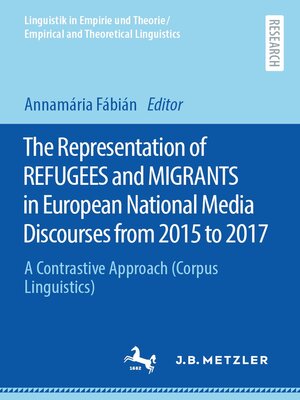The Representation of REFUGEES and MIGRANTS in European National Media Discourses from 2015 to 2017
ebook ∣ A Contrastive Approach (Corpus Linguistics) · Linguistik in Empirie und Theorie/Empirical and Theoretical Linguistics
By Annamária Fábián

Sign up to save your library
With an OverDrive account, you can save your favorite libraries for at-a-glance information about availability. Find out more about OverDrive accounts.
Find this title in Libby, the library reading app by OverDrive.



Search for a digital library with this title
Title found at these libraries:
| Loading... |
Though the refugee crisis was discussed in many countries e.g. in Greece, Hungary, Italy and Spain long before 2015, it began to receive cross- European press coverage only after Angela Merkel's statement 'Wir schaffen das!' on the August 30th 2015
This data-based study focuses on, how journalists report on and leading politicians make statements about refugees, migrants and asylum seekers in media and frame these humans after Angela Merkels' sentence in 2015 until the end of 2017. This volume uses mainly Corpus Linguistics but also Communicative Science for the analysis of labelling strategies and the usage of words, collocations and grammar systems used by journalists and politicians in different European countries in comparison. This empirical volume pictures language specific variation and change of labels. To enable a contrastive study between the press discourses of many European countries, every chapter analyses the data consisting of newspaper articles describing the discourse of a particular country, including discourses of some transit countries around the borders of the Schengen Area of the European Union, which barely have been covered in other studies.





